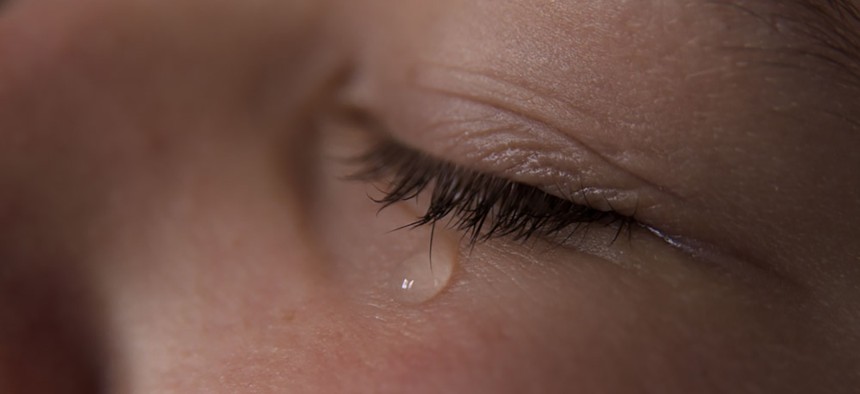
Shutterstock.com
How To Cry At Work Without The Social Cost
A new study looks at the way we tend to judge women who cry at work.
While I was working as an engineer at a large food company, I once became frustrated and upset when the meeting leader dismissed a concern I had expressed and, in my mind, put me down for voicing the concern at all.
I felt tears in my eyes, but decided to stay in the meeting and try to get my emotions under control. Afterwards, I heard through the grapevine that many people were talking about me. My colleagues were shocked that I would cry in a meeting. I also found that many of them treated me differently—as if I were fragile—after that instance. I now understand that they may have perceived me as weak and unprofessional because I cried.
Psychologists have shown that women are perceived more negatively than are men if they display emotions at work. Observers are more likely to make dispositional attributions (i.e., attributions to a person’s innate characteristics) when women express emotions. By contrast, they are more likely to attribute male expressions of emotions to the situation (e.g., it was an unexpectedly demanding situation). Researchers have also found that the belief that “displaying emotion at work is dysfunctional” is more likely to be applied to women than to men.
In my own research, which I conducted with my colleague Beth Bechky, we looked at a particular emotional display: crying. We focused on crying because it may be expressed in response to many of the emotions employees feel at work (e.g., frustration, anger, sadness), and because it is highly salient and memorable for people who observe it at work.
For the study, we interviewed 65 full-time, working professionals employed in a variety of industries and firms in Northern California. Our findings revealed one way to explain why observers tend to be judge women who display emotions at work differently than they judge men who do the same. They showed that when assessing female criers at work, observers rely on cognitive “scripts” about the way people should act in common—and stressful—work contexts such as receiving negative feedback.
These scripts typically prohibit crying at work, especially if the crying disrupts the work of others (e.g., it is done in a public area and lasts for more than a few moments). When observers of crying perceived that crying was situationally inappropriate, like crying in response to critical feedback, observers attributed criers as weak, unprofessional, or manipulative. By contrast, when observers found crying to be acceptable based on the situation, like receiving negative performance appraisal and crying privately afterward, they were more understanding or neutral about the crier. The findings suggest the way crying affects others in work environment and how it impedes the ability to get work done can cause reputation damage to the crier.
Our research showed that women feel the same emotions as men in the workplace, but they are often penalized because the “expression” of those emotions is crying versus an alternative reaction (e.g., raising one’s voice or pounding on a table in frustration).
For better or for worse, people bring their whole selves to work each and every day. It’s unfortunate that crying at work causes coworkers to feel uncomfortable and leave the crier perceived negatively—whereas outside the workplace, the natural human reaction might, and should, be a show of support or compassion.
At the same time, these findings highlighted some things that both criers and their organizations can do to minimize these unfair penalties in the present workplace culture, such as providing training or private spaces where workers can get their emotions under control. As unfair as it might be that women are judged differently than men for expressing emotion at work, the findings may also provide suggestions for how to handle crying situations.
When I felt frustrated and upset in that meeting years ago, I wish I had known then what I know now. If I had, I would have excused myself as soon as I felt the tears coming.






